Never miss an update from Universidad de Alicante
Create your free account to connect with Universidad de Alicante and thousands of other innovative organizations and professionals worldwide
The Materiales Carbonosos y Medio Ambiente (MCMA) research group at the University of Alicante has developed a new method to obtain high quality electrocatalytic powder materials from agricultural waste.The procedure is very simple, it is easy to scale up to industrial level, it has a low manufacturing cost and the materials obtained are characterised by high durability and selectivity towards the oxygen reduction reaction, reasons why they may become very promising candidates to replace current commercial platinum-based catalysts for use them in fuel cells.We are looking for companies interested in acquiring this technology for commercial exploitation.
TECHNICAL DESCRIPTION
In order to solve the problems described above, a new method has been developed for the synthesis of low-cost carbonaceous materials with excellent electrocatalytic properties using agricultural waste (biomass) for use them in fuel cells in an alkaline medium.
The procedure comprises the following steps:
1) Introduce the following compounds (in a given ratio) in an autoclave:
• The biomass precursor (ground to a specific particle size).
• A nitrogen precursor.
• A transition metal precursor (other than platinum group metals).
• Water as solvent (to achieve a homogeneous distribution between all the above compounds).
2) Place the autoclave in an oven at a certain temperature for a specific time.
3) Cool to room temperature.
4) Place the product obtained in the previous stage, homogeneously distributed, in a hermetically sealed oven.
5) Gradually, heat the oven to a certain temperature with a flow of inert gas.
6) Maintain the temperature reached in step 5) constant for a certain time.
7) Cool down to room temperature while maintaining the inert atmosphere.
8) After this process, the carbonaceous material is obtained in the form of fine powder (electrocatalysts).
The starting biomass can be any agricultural waste, for example: almond shells, olive pits, peach pits, wood, sawdust, cocoa shells, shellfish industry waste, etc.
The nitrogen precursor can be a nitrogen compound, such as: urea, melamine, dicyanediamide, etc.
Transition metal precursors are abundant in the earth's crust, and they can be metallic compounds, e.g. an inorganic salt or an organic salt of the metal, such as an iron oxalate, cobalt oxalate, nickel oxalate, etc. In no case, they are platinum group metals used, including: iridium, osmium, palladium, platinum, rhodium and ruthenium.
Nitrogen or argon may be used as an inert gas.
The electrocatalysts obtained by this procedure have specific surface areas greater than 500 m2·g-1.
The synthesis temperature has a very significant impact on the catalytic activity and selectivity of the carbonaceous compounds obtained, so that, by controlling this variable, catalytic activity values comparable to commercial electrocatalysts based on platinum nanoparticles can be achieved.
Similarly, it is key to use a specific nitrogen precursor to achieve high performance, obtaining carbonaceous compounds with activity and selectivity similar to commercial platinum catalysts.
Therefore, controlling all these factors is essential to obtain carbonaceous materials with excellent electrocatalytic properties, and the research group is an expert in this field.
The results obtained in some tests for these novel electrocatalysts are shown below (see Figures 1, 2, 3 and 4):
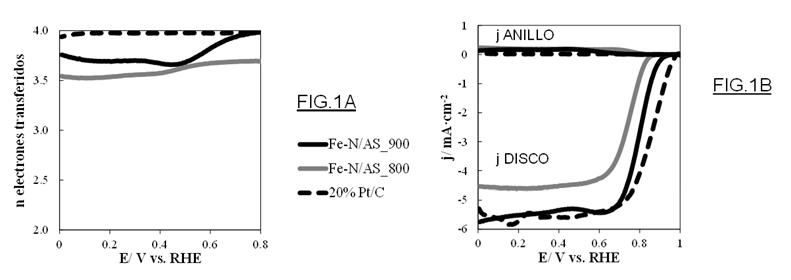
Figure 1: (A) Number of electrons transferred, and (B) Linear scanning voltammetry curves, at different temperatures.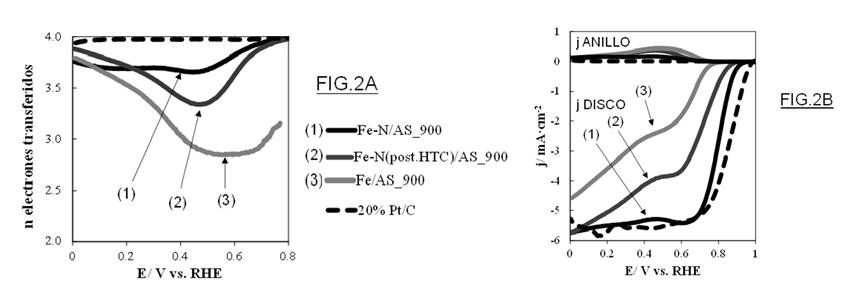
Figure 2: (A) Number of electrons transferred, and (B) Linear scanning voltammetry curves, modifying the nitrogen precursor.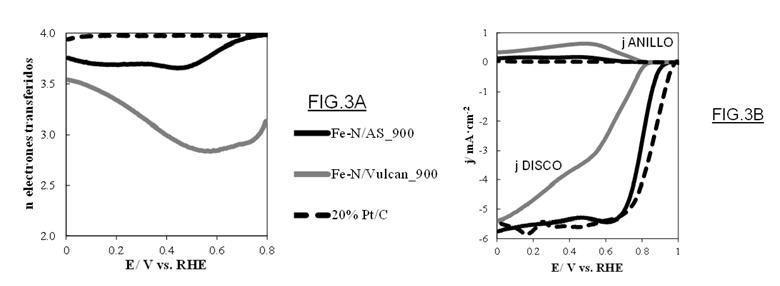
Figure 3: (A) Number of electrons transferred, and (B) Linear scanning voltammetry curves, using biomass or Vulcan carbon black.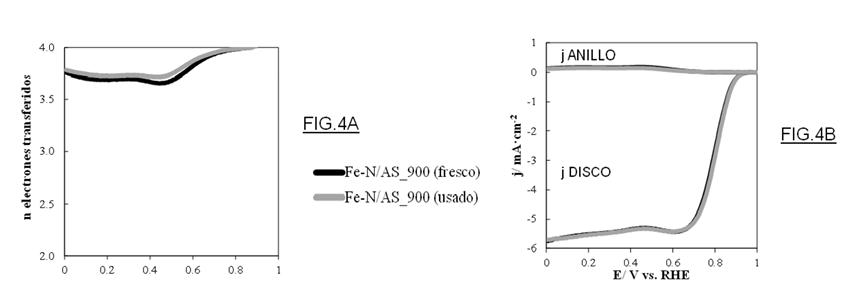
Figure 4: Durability study showing: (A) Number of electrons transferred, and (B) Linear scanning voltammetry curves, for fresh and used catalyst after 200 working cycles.
TECHNOLOGY ADVANTAGES AND INNOVATIVE ASPECTS
ADVANTAGES OF THE TECHNOLOGY
The main advantages of this novel procedure are listed below:
1) It is easier and it has fewer steps than currently used procedures.
2) Porosity development and surface functionalisation is carried out in a single step.
3) It does not require special equipment: the equipment used is commercially available and affordable for any laboratory or industry.
4) Catalysts are obtained in fine powder form, so they are easy to handle and to disperse in aqueous media at room temperature, which facilitates their conformation as electrodes. In addition, the prepared suspensions are stable over time.
5) The precursors used are very cheap and abundant, among them:
• Agricultural waste or any type of vegetable biomass (almond shells, coconut shells, cocoa shells, olive pits, peach pits, date pits, plum pits, etc.).
• Transition metals such as: iron, cobalt, nickel, etc.
6) Platinum group metals are not used, including: iridium, osmium, palladium, platinum, rhodium and ruthenium.
7) The final cost of the prepared materials is lower than commercial platinum-based catalysts.
8) The process can be easily scaled up to industrial level.
9) The carbonaceous materials obtained have high physico-chemical and mechanical properties:
• They are very stable (as commercial catalysts).
• Electrocatalytic activities similar to commercial platinum electrocatalysts are achieved in the oxygen reduction reaction in an alkaline medium.
• They show excellent durability after many reaction cycles (200 cycles).
• They are very robust, as they do not inactivate after the demanding durability tests to which they have been tested.
• They are characterised by their high selectivity to form water by the mechanism of transferring four electrons per oxygen molecule.
• The generation of by-products such as hydrogen peroxide, which limits energy yield and is damaging to the working of fuel cells, is prevented.
• They have specific surface areas greater than 500 m2·g-1.
10) Conventional activating agents are not used.
11) The carbonaceous materials obtained do not contain residues (usually formed in the conventional activation process).
12) Only a single stage at high temperature is required.
13) No subsequent catalyst washing steps are required.
14) The process has a low environmental impact. It is sustainable and environmentally friendly.
15) It reduces dependence on fossil fuels and it reduces the carbon footprint, thus contributing to the transition towards an economy based on renewable energies.
16) The synthesis method is versatile and it can be applied to other electrochemical reactions of interest by modifying the metallic precursor or by introducing other metals in the form of alloys.
17) The synthesis method has a high yield.
18) These materials are well suited to replace platinum electrocatalysts in low-temperature fuel cells in alkaline media.
INNOVATIVE ASPECTS OF THE TECHNOLOGY
The main innovation concerns the use of agricultural waste (biomass) to obtain low-cost carbonaceous materials with excellent electrocatalytic properties to replace current commercial platinum-based catalysts in the oxygen reduction reaction in an alkaline medium in fuel cells.
Furthermore, the present invention differs from current synthesis methods in two fundamental aspects:
1) Conventional activating agents involving subsequent washing steps are not employed. Thus, this invention provides a simple method of synthesis.
2) The chemical activation of the carbonaceous precursor and the incorporation of the active sites is carried out during the same thermal treatment, using just the right amount of the metal precursors and nitrogen.
On the other hand, in contrast to this invention, current synthesis methods require several washing steps, which increases the price of catalysts and contributes to a deterioration of the environment.
Through the appropriate selection of metal precursors (e.g. metals such as iron), nitrogen and appropriate biomass residues, catalysts for the oxygen reduction reaction in alkaline media can be obtained with similar features to commercial platinum catalysts.
Moreover, it is important to note that in this novel synthesis procedure:
• No washing steps (with water, acid solutions or organic solvents) are required after heat treatment, which it reduces the environmental impact and manufacturing cost.
• Only a single heat treatment at high temperature is required.
CURRENT STATE OF DEVELOPMENT
These novel electrocatalysts (see Image 1) have been successfully synthesised at laboratory level. This technology is at TRL = 4 (Technological Readiness Level).
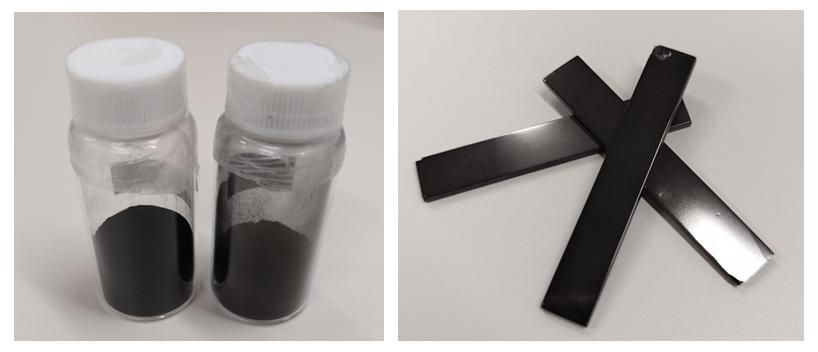
Image 1: Synthesised electrocatalysts in fine powder form and the supports on which they are deposited, respectively.
The kinetic parameters obtained for these new electrocatalysts for the oxygen reduction reaction in alkaline medium obtained from almond shells, whose values are similar to those obtained for commercial platinum electrocatalysts, are listed below:
• Reaction onset potential = 0.92 V vs. RHE.
• Half-wave potential = 0.79 V vs. RHE.
• Boundary current density similar to platinum-based electrocatalyst.
• Number of electrons at useful fuel cell potentials (0.6-1.0 V vs. RHE) between 3.8-4.0 RRDE (corresponding to the generation of practically water as the only product, avoiding the production of by-products such as hydrogen peroxide (less than 5%) which limits the energy yield and is detrimental to the working of the fuel cells).
As can be observed in the tests carried out, very promising results have been obtained in the oxygen reduction reaction in alkaline medium, indicating that the carbonaceous materials obtained from biomass waste show excellent catalytic activity and durability comparable to commercial platinum-based catalysts, which makes them very suitable for use them in fuel cells.
Moreover, materials obtained have been characterised using different techniques, such as transmission electron microscopy, X-ray spectroscopy and Raman spectroscopy, which has allowed us to know their structure and composition.
COLLABORATION SOUGHT
We are looking for companies interested in acquiring this technology for commercial exploitation through:
• Patent licensing agreements.
• Development of new applications.
• Agreements regarding technology and knowledge transfer.
Company profile sought:
• Manufacturers of catalysts and electrocatalysts for fuel cells.
Ahead of the current Coronavirus outbreak, Innoget is fully committed to contributing to mobilizing scientific and expert communities to find a real solution to the Covid-19 pandemic. Therefore, we're supporting worldwide calls and programs that could help in any aspects of the coronavirus crisis.
Is your organization promoting or looking for innovation or research initiatives to mitigate the Covid-19 outbreak? Email us at covid19@innoget.com to list them.
Channeled through Innoget's online open innovation network, initiatives in the health, virology, medicine, or novel technologies applied to human health, among others, are listed and disseminated to Innoget members -ranging from hospitals, research institutes, scientists, businesses, and public administrations- and innovation partners worldwide.
Create your free account to connect with Universidad de Alicante and thousands of other innovative organizations and professionals worldwide
Send a request for information
to Universidad de Alicante
Technology Offers on Innoget are directly posted
and managed by its members as well as evaluation of requests for information. Innoget is the trusted open innovation and science network aimed at directly connect industry needs with professionals online.
Need help requesting additional information or have questions regarding this Technology Offer?
Contact Innoget support